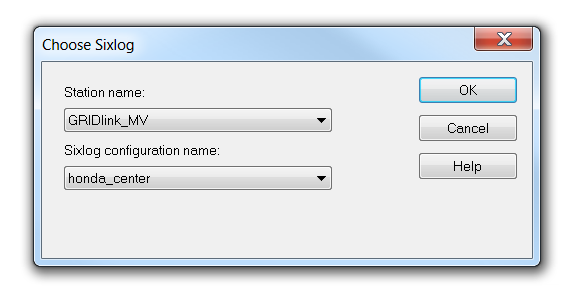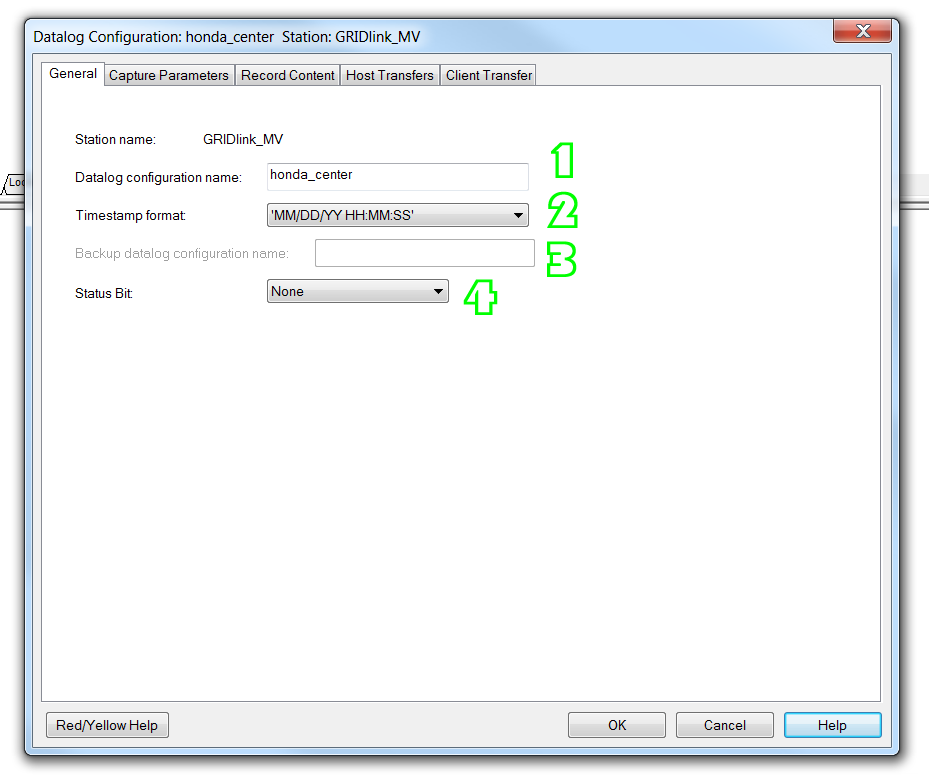Setting Up Sixlog SFTP Transfers – 1.0 General
Next Step : Capture Parameters
If a Sixlog configurstion exists in the Toolkit it will automatically appear.
- Select Station name and configuration name
1. Configuration name can be edited here.
2. Timestamp Format
Use this command to choose how the date and time stamp will be saved in the logged data file and viewed in Data Log. This date format may also be set or changed from within the Record Definition view.
Time Stamp Choices
- ‘MM/DD/YY HH:MM:SS’
- ‘DD/MM/YY HH:MM:SS’
- ‘YY/MM/DD HH:MM:SS’
- ‘MM/DD/YY,HH:MM:SS’
- ‘DD/MM/YY,HH:MM:SS’
- ‘YY/MM/DD,HH:MM:SS’
- ANSI C (Seconds since Jan. 1, 1970)
- Spreadsheet (Days since Jan. 1, 1900)
Notes:
- If you select ANSI C or Spreadsheet as the timestamp format, the Data Viewer window can display a readable ASCII date and time in place of the actual integer or floating point number from the data record.
- The date and time values are logged using the real-time clock in the station. Use the I/O Tool Kit program to maintain the real-time clock in the station.
- To obtain timestamp precision better than one second, add a modulo_mS entry in the Record Content view. (See Additional Variables.) The Time and Modulo_mS values in each data record can be added together in a spreadsheet or other application to provide timestamp resolution to one millisecond.
- In order to time stamp data records there must be a “time” data field defined in the Record Content view.
3. Backup Datalog Configuration Name
If the I/O Tool Kit project file includes a configuration for a backup (redundant) controller, this “Backup datalog configuration name” field will be available and will be used when loading the backup controller. By default, the backup datalog configuration name is left blank.
4. Datalog Status Bit
When the RTU configuration contains a virtual datalog status module with tag names assigned to the registers, a list of those tag names and register addresses will be selectable. Format of the status bit is shown below.
X
For example: X0 log_temps_sts — Discrete input at register address zero with the tag name log_temps_sts.
Next Step : Capture Parameters



